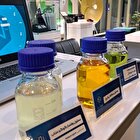Could ‘Bad’ Fat in Your Cooking Oil Actually Save Your Heart?

The researchers used blood markers instead of food diaries, making their results more robust, and observed that people with more linoleic acid in their plasma had lower blood sugar, insulin resistance, and inflammation. These findings suggest that omega-6 fats might actually be protective, not harmful, and call for further studies to test their benefits directly, the SciTechDaily reported.
New research suggests that a type of fat found in common seed oils could actually protect against heart disease and type 2 diabetes. Scientists measured levels of linoleic acid, an omega-6 fatty acid, in people’s blood and found that higher amounts were linked to lower levels of inflammation and other risk factors tied to poor heart and metabolic health.
Linoleic acid is the most common omega-6 fat in our diets. It’s found in many plant-based foods and is especially abundant in vegetable oils like soybean and corn oil.
“There has been increasing attention on seed oils, with some claiming these oils promote inflammation and raise cardiometabolic risk,” said Kevin C. Maki, Ph.D., adjunct professor at the Indiana University School of Public Health-Bloomington and chief scientist at Midwest Biomedical Research. “Our study, based on almost 1,900 people, found that higher linoleic acid in blood plasma was associated with lower levels of biomarkers of cardiometabolic risk, including those related to inflammation.”
Maki presented the findings at NUTRITION 2025, the flagship annual meeting of the American Society for Nutrition held in Orlando.
The new results are consistent with those from observational studies that have shown higher intake of linoleic acid to be associated with lower risks for type 2 diabetes and cardiovascular events, such as heart attacks and strokes.
“Although other studies have assessed relationships between linoleic acid and cardiometabolic risk factors, our study used objective biomarkers rather than diet records or food frequency questionnaires to assess linoleic acid intake,” said Maki. “We also measured a range of markers of inflammation and indicators of glucose metabolism.”
For the new study, the investigators performed a cross-sectional analysis on data from 1,894 people in an observational cohort focused on COVID-19. They found that higher levels of linoleic acid in plasma—indicative of dietary intake—were consistently associated with lower levels of risk factors for cardiovascular disease and type 2 diabetes.
Specifically, study participants with higher linoleic acid showed lower levels of glucose and insulin as well as HOMA-IR, a biomarker of insulin resistance. They also had lower levels of inflammation biomarkers, including C-reactive protein, glycoprotein acetyls, and serum amyloid A.
“We saw consistent results across the different biomarkers measured,” Maki said. “People with higher levels of linoleic acid in their blood tended to have a healthier overall risk profile for heart disease and diabetes.”
The researchers say that their findings support the need for additional intervention studies to test whether increasing linoleic acid intake improves cardiometabolic risk factors and lowers the incidence of heart attacks, strokes, and type 2 diabetes. Next, they plan to investigate how different types of oils with varying fatty acid content affect cardiometabolic risk factors.
4155/v





















